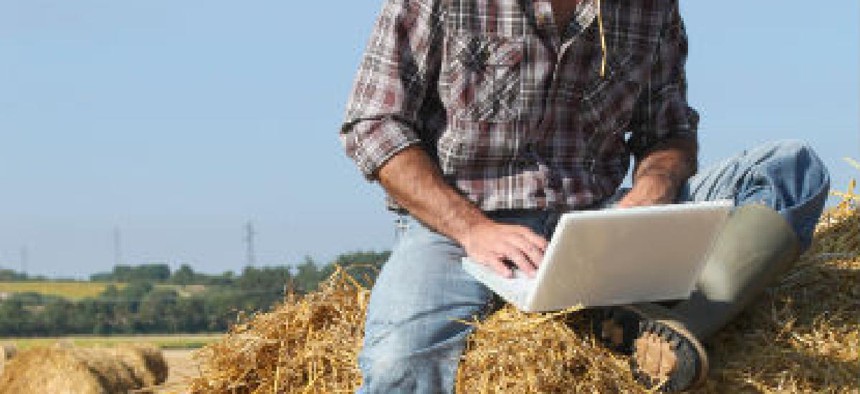How USDA crowdsourced agricultural data

Armed with $63,000 and Microsoft’s cloud platform, USDA rustled up a new crop of agricultural data dashboards to help secure a sustainable food supply.

Farmers want useful data, and the Agriculture Department has plenty, but unlocking the utility of that information isn't easy. So a contest born of a USDA-Microsoft partnership offered competitors access to a century of public crop and climate data, collected from surveys, satellite imagery and more and hosted on Microsoft's Azure cloud platform.
USDA announced the winners of its USDA-Microsoft Innovation Challenge on Jan. 27. Agriculture Secretary Tom Vilsack stressed to FCW that the project was vital since, with an ever-growing American population to feed, U.S. farmers need all the data-driven help they can get.
"We are anxious to see an increased utilization [of agricultural data]," Vilsack said.
The grand prize and award for best visualization went to "FarmPlenty Local Crop Trends," a dashboard that gives farmers a close look at crop prices and the most prevalent produce in the areas around their farms.
Developer George Lee took home the $25,000 prize.
"Green Pastures," a dashboard presenting fertility, rainfall, market and other data, earned second prize, while "What's Local?," a tool aimed at showing urban Americans the agriculture produced near their cities, came in third.
All told, the program saw, "33 pretty good submissions," Vilsack said, and paid out $63,000 in prize money. The contest's winners came from around the globe: Lee is based in San Francisco, while others hailed from Brooklyn; Nashville; Mumbai, India; and Lincoln, Neb.
That diversity speaks to the global nature of the food challenge, Vilsack said.
USDA has long promoted world-spanning initiatives to link data and farmers, the secretary noted, from the Global Open Data for Agriculture and Nutrition project to the U.N.'s Climate-Smart Agriculture push.
"Publicly funded [data] should be available to anyone and everyone who wants to use it," he said.
Contests like the USDA-Microsoft joint help put governments' data into the hands of farmers who need them. The hope is that farmers turn around and make data-driven decisions to create a resilient, sustainable food supply.
Vilsack wouldn't commit to future work with the contest winners, but said their projects are just a sign of good things to come.
President Obama's 2017 budget request will include $700 million for agricultural research, Vilsack said.
That money will help fuel the creative unlocking of agricultural data which, as the USDA-Microsoft winners' projects have done, should help existing farmers and give the next generation of farmers a solid foundation as well.
NEXT STORY: Video: This Vending Machine Is Watching You





